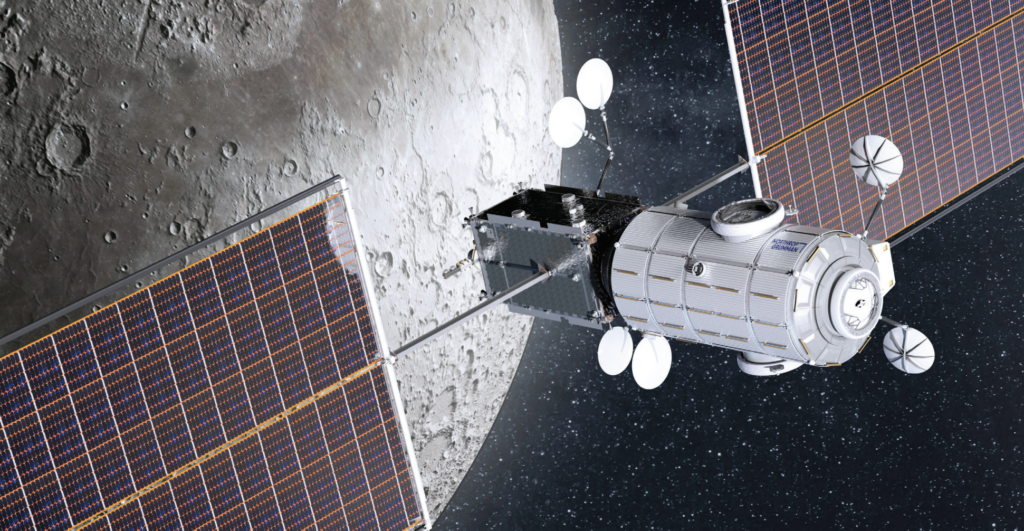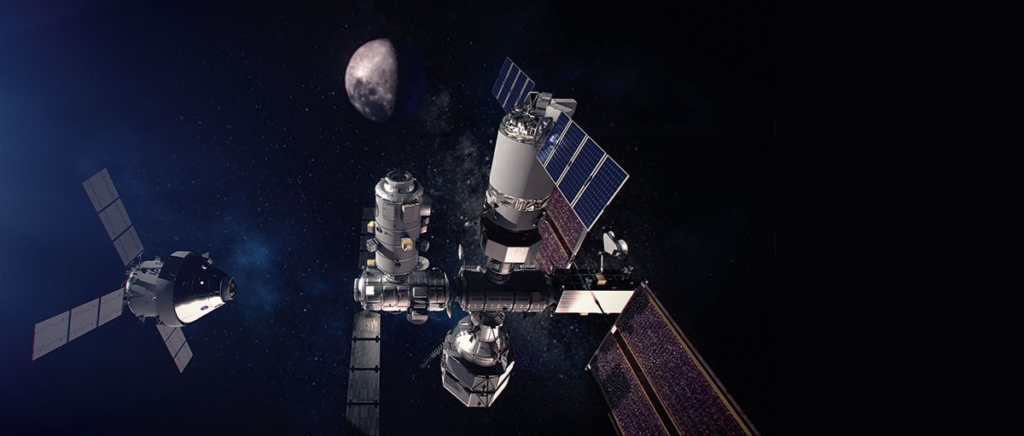
A Closer Look Inside NASA’s Future Moon Space Station
The last time humans went to the Moon during the Apollo missions, they were very limited by technology and a lack of systems in place to support the expeditions. This affected where they could land, how long they could stay, what equipment would be brought with them, etc. On Artemis however, for the first time, we will see a dedicated Moon space station named Gateway.
Much smaller than the International Space Station, this Moon orbiting outpost will provide core functions to keep astronauts healthy and thriving. Taking a look at the inside of Gateway, and you will find some unique systems and a small area, especially at the beginning. Over time, NASA and its partners plan to expand this station with more segments and technology.
For the first missions, astronauts are expected to be exposed to somewhat of a cramped area with only so much room for movement and tasks. Here I will go more in-depth into what life inside the station will be like, how it compares to other space stations, its importance for humans’ return to the Moon, and more.
Inside Gateway

Due to cost, time, the location of the station, and other factors, the entire Gateway Space Station will be built out over the course of multiple years. This means that inside the station will change quite a bit as more modules are added and the space plus capabilities expand. The first two modules will be launched together on the Falcon Heavy rocket in November 2024. The two modules include the Power and Propulsion Element (PPE) and the Habitation and Logistics Outpost (HALO).
The HALO module will be the main living quarters for initial astronauts going to the Moon. Northrop Grumman who was contracted for this module, highlights that there will be proper volume inside for the crew to sleep, exercise, prepare food, perform scientific experiments, and more. A mockup of this specific module shows the interior which looks quite spacious. You can see some station and scientific equipment on the left side and then a large docking port toward the middle. Practically the entirety of both walls will feature storage for various things needed.
Next is the Power and Propulsion element, which is less focused on life support systems and supporting astronauts in that manner. PPE’s main job is to provide power, communications, maneuvering, attitude controls, and initial docking features to the station. A recent update from NASA highlights the size of this module in comparison to humans. Just days ago on the 31st, NASA tweeted saying, “That’s watts up! Gather around to see the progress on the central cylinder of Gateway’s Power and Propulsion Element (PPE). Provided by @Maxar, PPE will make Gateway the most powerful solar electric spacecraft ever flown.” Here you could see the cylinder next to a large group of the team working on this module.
While NASA and some of the companies working on the station highlight all of its interior benefits and features, there are some concerns regarding the amount of interior space being extremely limited. Early this year, reports came out about the size and interior space of Gateway. According to an architect involved in the station’s design, the living quarters of NASA’s moon orbiting Gateway station will be so tiny that astronauts will not be able to stand upright inside. He was quoted saying, “In other words, that would be a room 2 by 2 by 2 meters [6.6 by 6.6 by 6.6 feet]. And you are locked in there with three other people. There are other rooms but they are not bigger and there are not many of them.” Due to various mass restrictions along with ensuring two of these modules can fit within the launch vehicle, the size of the station has become quite a bit smaller than originally planned.
For comparison, the International Space Station features 7.2 by 7.2 feet-wide (2.2 by 2.2 m) interiors, where astronauts could even perform spins in the air, offering a luxury experience compared to what awaits moon explorers on Gateway. In another quote, the architect pointed out, “The I-Hab really is just a cylinder with a hatch on each end and two hatches at the sides and a corridor going through the length axis. Even if you want to pass one another, it’s already quite difficult, you have to interrupt whatever you are doing in the moment to let the other fellow pass by you.” Most of the internal volume is consumed by machinery, so it’s essentially just a corridor, where you have to turn 90 degrees if you want to stretch out.”
He went on to say, “Actually, you are living in a machine room. The life-support systems make noise, they have a lot of fans, and you have only 1.5 cubic m of private space where you can close the door and tame the noise.” They point out that the architects explored ways to ease the pressure on the crew and make the experience of staying aboard the Gateway more enjoyable, but they kept hitting technical limits, including those of launch vehicles available to send the module to its destination. In addition, the architect commented “We always get asked “where is the window? At the International Space Station, the most popular place where astronauts spend every free minute is the window. But there are technical problems associated with it. The moon is a thousand times farther away [than the ISS] and each window is a disturbance in the continuity of the structure. Also, glass is very heavy so a window is the first thing that gets canceled.” On the two initial modules of HALO and PPE, there won’t be any windows. In the future, however, with the addition of other modules, there will be small ones.
The Backbone of Artemis

While these future modules might not be the most comfortable or spacious, they play a very important role in setting up a more permanent human presence on the Moon. As future Artemis missions establish humanity’s long-term presence on and around the Moon, habitation elements on the Gateway space station will serve as important building blocks. These elements will not only be a home-away-from home for astronauts during extended stays in lunar orbit, but also enable additional capabilities in support of Artemis objectives.
Gateway will be launched and placed into a Near Rectilinear Halo Orbit (NRHO). This specific orbit is just right for Gateway, marrying the upsides of low lunar orbit, in the form of surface access, with the benefits of distant retrograde orbit (fuel efficiency). Hanging almost like a necklace from the Moon, NRHO is a one-week orbit that is balanced between the Earth’s and Moon’s gravity. This orbit will periodically bring Gateway close enough to the lunar surface to provide simple access to the Moon’s South Pole where astronauts will test capabilities for living on other planetary bodies, including Mars. NRHO can also provide astronauts and their spacecraft with access to other landing sites around the Moon in addition to the South Pole.
On actual missions, we can expect SpaceX’s Starship lunar lander to rendezvous with Gateway in this unique orbit. Once docked to the station, they will await the arrival of the crew on Orion. When the crew arrives, they will transfer from Orion inside Gateway and onto the Starship lander. From here they will descend to the lunar surface for days or weeks, depending on how long the expedition is. Once complete, they will get back on Starship which brings them back up and docks once again with Gateway.
The station is expected to have a constant stream of supplies to facilitate human health and operations on the Moon. Back in 2020, NASA selected SpaceX as the first U.S. commercial provider under the Gateway Logistics Services contract to deliver cargo, experiments, and other supplies to the agency’s Gateway in lunar orbit. Here, SpaceX will deliver critical pressurized and unpressurized cargo, science experiments, and supplies to the Gateway, such as sample collection materials and other items the crew may need on the Gateway and during their expeditions on the lunar surface.
“This contract award is another critical piece of our plan to return to the Moon sustainably,” said NASA Administrator Jim Bridenstine. “The Gateway is the cornerstone of the long-term Artemis architecture and this deep space commercial cargo capability integrates yet another American industry partner into our plans for human exploration at the Moon in preparation for a future mission to Mars.” NASA is planning multiple supply missions in which the cargo spacecraft will stay at the Gateway for six to 12 months at a time. These firm-fixed price, indefinite delivery/indefinite quantity contracts for logistics services guarantee two missions per logistics services provider with a maximum total value of $7 billion across all contracts as additional missions are needed.
The Gateway Logistics Services contract enables NASA to order missions for as long as 12 years with a 15-year performance period and provides the ability to add new competitive providers. These missions will support NASA’s plans for sustainable exploration with both international and commercial partners, while developing the experience and capabilities necessary to send humans to Mars. This joins a more recent contract with SpaceX to provide Falcon Heavy for the launch of PPE and HALO together in 2024. As we approach the middle of 2023, these missions and dates seem to be getting very close. Only days ago the astronauts were announced who will take the first steps on the Moon in over half a century. Something we can look forward to in the coming years.
Conclusion
NASA and its International partners are working on a Moon space station for future Moon and deep space missions. On the inside, especially in the beginning, Astronauts will be in quite a cramped space with a lot of equipment taking up the limited space. We will have to wait and see how it progresses and the impact it has on the space industry.
